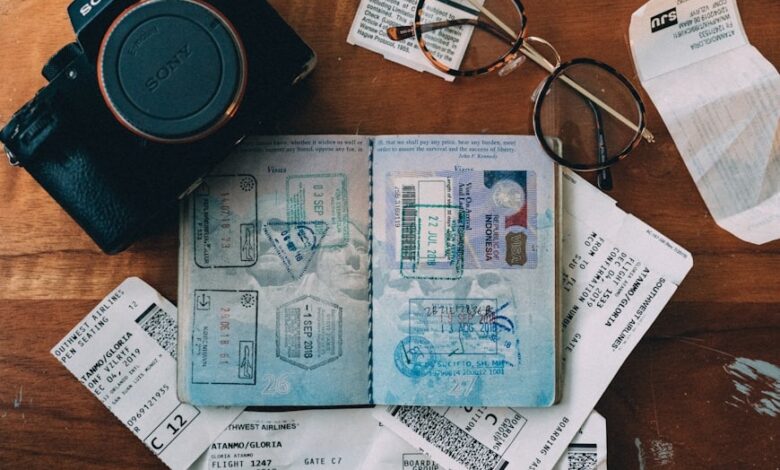14 Tips To Save Money On Your Next Vacation

Want to travel without wrecking your bank account? I completely understand. Vacations can be expensive, but they don’t have to wipe out your savings. After spending years studying personal finance and seeing countless people worry about travel costs.
I’ve learned that smart planning changes everything. You don’t have to choose between enjoying an incredible trip and keeping your finances intact.
This guide shares fourteen practical strategies that truly work. These aren’t just theories, I’ve tried most of them myself, and I’ve watched clients save thousands by applying even a few. If you’re ready to travel smarter, let’s dive in.

1. Plan Your Trip During Off-Season Months
Why Timing Matters More Than You Think
Ever noticed how hotels suddenly become cheaper right after peak season ends? That’s not random. Traveling during shoulder or low seasons can cut your costs by 30-50%, sometimes even more. IMO, this is the single most impactful move you can make.
Think about it this way: a beach destination that charges $250 per night in July might offer the same room for $100 in September. The location hasn’t changed; the hotel hasn’t upgraded or downgraded you’re just traveling when fewer people want to go. That’s essentially free money left on the table if you don’t pay attention to seasonal pricing.
Finding Your Sweet Spot
Research the destination’s weather patterns and local holidays. Most popular destinations have clear off-peak windows:
- Beach destinations: Late August through early September (post-summer, pre-fall break)
- Mountain areas: Early spring or late fall (avoiding ski season)
- European cities: November or early December (before Christmas tourism)
- Tropical locations: June through October (rainy season means discounts)
The key? Check weather forecasts for your target months. You might find that the “rainy” season still has plenty of sunny days, just fewer crowds demanding premium prices.
2. Set a Realistic Budget Before Booking Anything
Get Your Numbers Straight First
This step separates travelers who return home stressed from those who return relaxed. Before you even look at flights, sit down and answer one question: How much can you actually afford to spend without going into debt?
I recommend using what I call the “50/30/20 framework” adapted for vacation planning. Allocate 50% of your vacation budget for accommodations, 30% for experiences and food, and 20% for everything else (transportation, emergencies, tips). This prevents you from overspending on hotels and then scrambling for restaurant money.
Breaking Down Your Budget Categories
Create a detailed spreadsheet covering:
- Flights or transportation
- Lodging (total for all nights)
- Food and dining
- Activities and attractions
- Local transportation
- Shopping and miscellaneous
- Emergency buffer (at least 10%)
Be realistic about each category. If you love eating out, don’t pretend you’ll cook every meal in an Airbnb. Budget for what you’ll actually do, not what you think you should do.
3. Use Fare Comparison Tools and Flight Alerts
Stop Guessing on Flight Prices
Setting up flight alerts takes five minutes and saves hundreds. Tools like Google Flights, Skyscanner, and Kayak let you monitor specific routes and get notifications when prices drop. I set alerts three to four months before my trips and watch the patterns.
Here’s what I’ve discovered: flight prices typically dip on Tuesdays and Wednesdays, and booking 6-8 weeks in advance generally hits the sweet spot. Too early and airlines haven’t released many seats; too late and inventory gets tight.
Pro Techniques That Actually Work
- Set up multiple alerts for flexible dates around your preferred travel window
- Clear your browser cookies before comparing prices (airlines track your searches)
- Book on weekday mornings when fewer people are shopping
- Consider nearby airports flying into a secondary airport often costs significantly less
- Use incognito mode to prevent dynamic pricing from inflating quotes as you search
Never book the first quote you see. Patience genuinely pays here.
4. Choose Accommodations Strategically
Beyond Just Picking a Hotel
Accommodation typically eats up 40-50% of your travel budget, so this decision matters. You have more options than hotels, and many cost way less.
Airbnb and vacation rentals work brilliantly for families or groups splitting costs. A two-bedroom apartment for four people often costs less per person than separate hotel rooms. You also save money cooking some meals instead of eating every meal out.
Hostels aren’t just for backpackers anymore. Many have private rooms with en-suite bathrooms, common kitchens, and social areas. You pay fraction of hotel prices and meet other travelers. FYI, hostels often book out months ahead, so reserve early.
Guesthouses and boutique stays in smaller towns beat the touristy hotel scene. You get more character, better service, and significantly lower rates. The trade-off? Less convenient locations and fewer amenities. That’s fine if you’re okay with a basic stay.
Comparison Shopping Matters
- Check Google Hotels, Booking.com, and Expedia simultaneously
- Read recent reviews carefully a cheap room that’s dirty isn’t a deal
- Ask about package deals combining room plus breakfast
- Book directly with smaller properties for potential discounts
- Use loyalty programs if you stay at the same chain frequently
5. Build Meals into Your Accommodation Choice
The Breakfast Difference
Including breakfast saves you $15-25 per person daily. Over a week, that’s $105-175 per person. Multiply that by your travel party and suddenly you’re talking serious money.
Many accommodations include breakfast some great, some mediocre. Read recent guest reviews specifically about the breakfast quality. A good, included breakfast fundamentally changes your daily budget math.
Eating Smart Without Sacrificing Enjoyment
You don’t need to pack sandwiches for every meal, but strategic eating stretches your budget considerably:
- Eat your main meal at lunch (cheaper restaurant pricing than dinner)
- Shop at local markets for snacks, drinks, and picnic supplies
- Have breakfast where you sleep (included or self-catering)
- Try food trucks and street vendors for authentic, affordable meals
- Split large plates at restaurants when portions run huge
- Save fine dining for one special meal, not daily habit
I’ve traveled extensively, and honestly? Some of my best meals came from local markets and street food, not fancy restaurants. You’ll eat better food for less money this way.
6. Take Advantage of Tourist Discounts and Free Activities
Money Sitting on the Table
Most destinations offer free walking tours, park access, and museum discounts. You’re leaving money on the table if you don’t research these before arriving.
Check websites like Viator, Meetup, and destination tourism boards for free or deeply discounted attractions. Many museums offer free hours on specific days or times. Some destinations have city cards bundling multiple attractions at discounts.
Creating Your Activity Strategy
- Make a list of must-see attractions before arrival
- Research discount cards or combination tickets
- Schedule free activities between paid ones
- Book popular attractions in advance (often cheaper online)
- Ask your accommodation staff about local secrets and cheap activities
Free activities often deliver the best memories anyway. A free walking tour gives you city history plus local perspective. That beats a rushed museum visit where you’re cranky and overcharged.
7. Use Public Transportation Instead of Taxis and Rentals
The Transportation Math
Rental cars cost $50-100 daily, plus gas, parking, and potential accident liability. Taxis are flat overpriced in tourist areas. Public transit? Usually a fraction of the cost and way less stressful.
Get a public transportation pass covering unlimited travel during your stay. Most cities offer daily, weekly, or multi-day transit passes at reasonable rates. Spend an hour learning the system and you’ve solved your transportation problem affordably.
Ride-sharing apps like Uber seem cheaper initially but add up fast. One ride for four people equals four individual charges. Use them strategically, not habitually.
When Car Rentals Make Sense
If you’re visiting remote areas or national parks with no transit, a car makes sense. Split the cost among your group and it becomes reasonable. Just factor in gas, tolls, parking, and insurance the total often surprises people.
8. Travel With a Group or Find a Travel Buddy
The Splitting Strategy
Traveling as a pair or small group dramatically reduces per-person costs:
- Split accommodation costs (one hotel room with two beds beats two rooms)
- Share meals by ordering multiple appetizers instead of entrees
- Divide transportation (splitting a rental car, group tour, or hired driver)
- Bulk purchase groceries or snacks
Four people splitting a vacation rental might each pay what they’d pay for one hotel room. That’s significant savings before you even leave the parking lot.
Finding Travel Companions
Websites like TravelBuddy.com and Meetup connect travelers. Facebook travel groups for specific destinations help you find like-minded people. Start small maybe one road trip before committing to an international adventure together.
9. Book Flights with Flexible Dates and Cheaper Airlines
The Flexibility Premium
Flying mid-week costs less than weekends. Flying on holidays costs more. Flying on Tuesday morning beats Friday evening. This flexibility alone can save $100-300 per ticket.
Most comparison tools let you search flexible dates across a week or month. Spend 10 minutes seeing the complete price spectrum you’ll find patterns immediately.
Budget Airlines Get a Bad Reputation Unfairly
Yes, they charge for baggage and seat selection. No, they’re not flying deathtraps. Airlines like Southwest, Spirit, and international carriers operate safely while charging 50% less than traditional airlines.
Do the math honestly:
- Traditional airline: $400 roundtrip
- Budget airline: $150 + $35 (carry-on bag) + $15 (seat) = $200 roundtrip
You save $200 by accepting less frills. That $200 pays for multiple nice dinners at your destination.
10. Negotiate or Haggle in Local Markets
It’s Expected, Not Rude
In many destinations, haggling is standard practice. Tourists who don’t negotiate often pay double or triple local prices. Vendors expect it; they’ve built markup into opening prices.
Approach haggling respectfully. Smile, be friendly, acknowledge the quality of their goods. Start by offering 50-60% of the asking price. You’ll typically settle around 70-80% of the original quote.
Where Haggling Works Best
- Street markets and bazaars
- Souvenir shops in tourist areas
- Unmetered taxis
- Guides and tours (especially multi-day)
- Accommodation at guesthouses and small hotels
Haggling for packaged goods at chain stores doesn’t work and comes across as rude. Use common sense about context.
11. Use Cashback and Travel Rewards Credit Cards
The Financial Strategy Behind Rewards
Travel rewards cards offer real value when used strategically. Chase Sapphire Preferred and American Express Platinum offer significant point multipliers on travel and dining. Those points convert to statement credits or free flights.
Here’s the honest take: rewards cards only benefit you if you pay the full balance monthly. Carrying a balance and paying interest destroys any rewards value. If you spend responsibly, rewards cards are legitimate money in your pocket.
Real Numbers
If you spend $2,000 on travel purchases and earn 2 points per dollar, you’ve accumulated 4,000 points. Those points might equal $50-80 in travel credit, depending on redemption rates. That’s free money for spending you’d do anyway.
Strategic Approach
- Choose one primary card for travel spending
- Maximize bonus categories (restaurants, hotels, flights)
- Never carry balances—that erases rewards value
- Check for annual fee value (premium cards justify fees through annual credits)
- Combine rewards from multiple cards strategically
12. Travel Insurance Saves Money in Emergencies
Why This Seems Counterintuitive
Paying for travel insurance feels like throwing money away until something actually goes wrong. Then it feels like the smartest purchase you ever made.
Medical emergencies abroad devastate budgets. A single hospital stay or emergency evacuation can cost $10,000-100,000+ without coverage. Travel insurance costs $100-300 and covers these disasters.
What Actually Matters in a Policy
Look for coverage including:
- Medical emergencies and evacuation
- Trip cancellation (reimburses prepaid costs if you cancel)
- Lost or delayed baggage
- Emergency dental
Compare policies on InsureMyTrip or SquareMouth to find real value. Don’t just pick the cheapest option read what’s actually covered.
I’ve seen clients cancel trips due to illness and recover $5,000 in prepaid costs because they had insurance. That’s not wasteful spending; that’s financial protection.
13. Visit During Festival or Event Seasons (Sometimes)
The Counterintuitive Savings Window
You’d think festivals raise prices, and usually they do. But here’s the nuance: some festivals coincide with shoulder season, creating windows where attractions open discounts to fill occupancy before prices would rise.
Research festival calendars and accommodation availability simultaneously. Sometimes festival season offers better deals than off-season on accommodations specifically, even if dining and activities cost more.
Real Example
A beach town might have lower hotel rates during a week-long music festival (more room availability) compared to the same week off-season. But dining and attractions might cost 20% more during the festival. Run the numbers for your specific situation.
14. Plan Return Trips and Build Long-Term Travel Goals
The Smart Budget Strategy
Instead of taking random expensive vacations, pick specific destinations and visit multiple times over several years. Each repeat visit costs way less because you skip tourist attractions and dining.
First-time visitors typically spend heavily on “must-see” attractions and touristy restaurants. Second-time visitors shop at local markets, eat where locals eat, and spend time simply being in the destination rather than frantically checking off lists.
The Financial Reality
- Year one to destination: $3,000 per person
- Year two to same destination: $1,500 per person
- Year three to same destination: $800 per person
You’re visiting somewhere you love while costs keep dropping. That’s not just smart financially that’s better travel experiences too.
Final Thoughts
Here’s what matters: vacations shouldn’t stress you out financially before, during, or after. These 14 strategies don’t require sacrifice; they simply need planning and smart decision-making. Start with the changes that feel easiest for you.
Maybe that means setting flight alerts, trying a hostel for the first time, haggling in markets, or finally using that rewards credit card you’ve been ignoring.
Pick a few strategies and put them into action. Your next vacation can be the one where you come home rested, happy, and still financially secure. You’ve got this.









